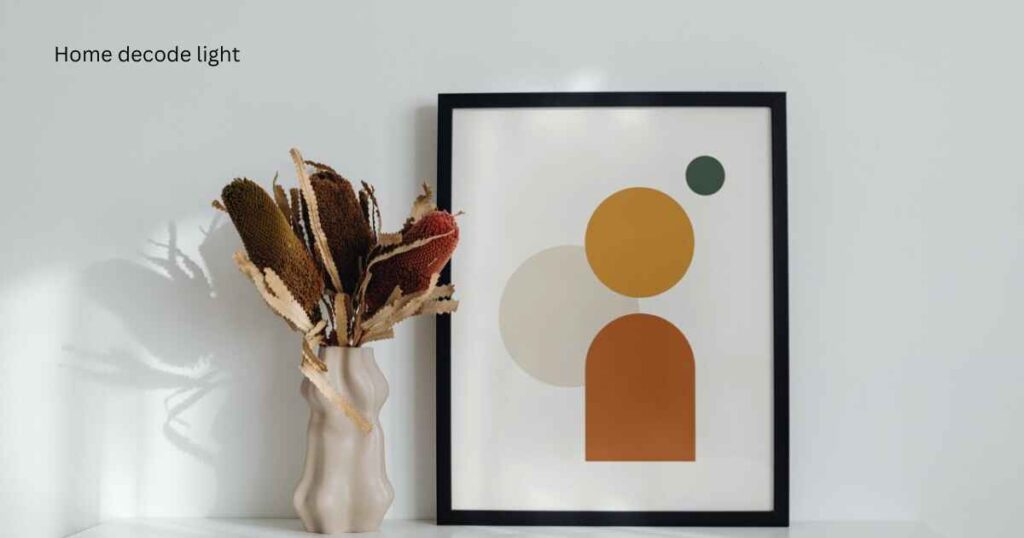How do I choose an abstract wall art?: The task of choosing the right abstract canvas wall art can be both fun and challenging.
How do you choose between all the different colors and styles? We can help. This blog post will guide you through selecting the best abstract canvas wall art to decorate your home.
If you are a first-time buyer or an experienced collector, we have some tips for you and a look at our abstract canvas wall art collection.
There are no rules when it comes to decorating your home with artwork. If you are looking for abstract canvas wall artwork for your home, some guidelines will help.
You don’t have to stick to rules when decorating your home. Here are some guidelines for choosing abstract wall art for your home.
Finding out what you enjoy is simple. You can often tell what you like by the way it feels. The feeling that you get from large abstract Art is all you really need to know. [How do I choose an abstract wall art?]
9 beautiful abstract art is best for your living room walls
- Geometric Patterns
- Fluid Art
- Monochromatic Abstracts
- Ink and Watercolor Blends
- Minimalist Abstracts
- Circular Motifs
- Floral Abstracts
- Gold Leaf Accents
- Interactive Art
1. Geometric Patterns
Geometric pattern design can be used in many different ways. We introduce you to and show 35 diverse and vibrant examples.
Math is the foundation of geometric patterns. Geometry is a branch of mathematics that deals with lines, angles and curves. It’s easy to see that they can be applied to Art and design.
A geometric pattern consists of objects, pictures, shapes or other elements which repeat. The repetition can be obvious and regular, such as squares on a grid. It can also be irregular or asymmetrical to create a pattern that looks abstract.
Geometric patterns are a part of design that has been around for thousands of years, and you don’t need to use advanced technology to make them.
You’ll only need a compass and ruler to draw the lines and shapes that make up geometric patterns. [How do I choose an abstract wall art?]

2. Fluid Art
You may believe that Fluid Art such as Acrylic Pouring isn’t Art. Pour some colors into a cup and then pour it on the canvas. Well, let me change your opinion about Fluid Art and the artists working with this medium.
Sincerely, I thought the same thing. Once I started using pours as backgrounds for my paintings, I realized how much knowledge I needed to achieve the desired results.
To create each pour, I had to use some of the same principles I used to paint any previous painting and learn about physics. Yikes!
Fluid Art can also be called Acrylic Pouring. There are many ways artists can pour paint to achieve the desired effects. Fluid Art is often described using terms such as clean pour, dirty pour, flip cup, and swipe.
Mixed Media Girl and Olga Soby will help us learn each of these techniques in a later post. But first, let’s look at the history of Fluid Art. [How do I choose an abstract wall art?]
Read Also: How can I stick pictures on my wall?
3. Monochromatic Abstracts
This new series was in the works for a long time for those following along. This series started at the beginning of the year.
I was very pregnant, and I ran out of steam last month. This pregnancy was more difficult than the first. I finished my commissions and relaxed for two weeks.
It was a good thing I did because I was growing an enormous baby! Two kids have made the past two months like a crazy time warp.
This month, I have enjoyed slowly returning to the studio at my own pace. It’s been great to get back into the creative groove. It’s great to be back in the studio again. I had a wonderful break, but it was nice to get into the groove.
This new piece, “Pinkalicious Ness,” is a great addition to the series. Here is the study. This one is going to be a 36″x36″ abstract painting.
I’m so excited to start! Using so many colors and having one dominant color for each painting has been so much fun.
I love hot pink paintings and hope to paint a few for this collection. Keep an eye out and sign up for the mailing list so you know when this series is released. [How do I choose an abstract wall art?]

4. Ink and Watercolor Blends
I draw a lot with ink pens combined with watercolor. Combining pens and watercolors gives me a high degree of detail and control while retaining the aesthetics of color washes.
I am a naturalist and enjoy presenting my subjects with delicate, dynamic compositions. The style of my drawings has evolved from the first time I used this technique to imitate the aesthetics of hand-colored etchings or engravings in the 18th and early 19th centuries.
The drawing is done in several stages. First, a pencil sketch is made. Then, the pen lines and pencil guidelines underneath are removed.
The final step involves adding many thin washes of watercolor to add color. This post includes several videos that demonstrate the technique. [How do I choose an abstract wall art?]
Read Also: Can you paint over metallic wall paint?
5. Minimalist Abstracts
Minimalism emerged in America during the mid-1960s as a reaction to previous art movements. Minimalists viewed popular styles like Abstract Expressionism, which is artwork that focuses on emotion and self-expression, as being too complex, personal and unapproachable to most people.
Minimalist artists decided to eliminate elements of self-expression from their work, something that had never been done before in the art world.
They certified their work and focused on the medium and material rather than meaning. The form was treated similarly, resulting in objective and nonreferential works.
This movement is similar to Conceptual Art, which gained popularity in the 1960s/70s by challenging the dominant and elitist art forms.
Frank SArtla, a Minimalist artist, famously stated: ” What you see is what.” This quote perfectly encapsulates the essence of Minimalist Art. It is devoid of extraneous visual associations and is purely what it is. [How do I choose an abstract wall art?]

6. Circular Motifs
Mae experiences a tear in her body at least three times during the novel. The rip is described as being in a black space inside her. It doesn’t last very long, but she can feel the tears widening when she closes their eyes.
She also hears the screams from “millions of invisible souls” as she sits at her computer trying to answer questions and manage her social media feeds while having an actual thought about what is bothering her.
Mae, for example, is thinking of Kalden, and how she cannot find any information about him in CircleSearch. She feels the tears again when her webcam captures her father and mother having, and Bailey refuses to delete the footage.
Mae experiences these moments when she feels overwhelmed. They appear to be a form of panic attack. Mae’s tears start to flow as she realizes what cannot be known. [How do I choose an abstract wall art?]
7. Floral Abstracts
Romina draws inspiration from various sources, including architecture, interior designs, and Italian mid-century Art.
She explores the interaction between shapes, colors, textures, and other elements. Her work combines minimalism with eclecticism to create truly evocative pieces.
Her artistry is characterized by attention to detail and commitment to quality. This piece was curated in partnership with Lipman Art and is professionally framed utilizing award-winning moldings that are renowned for their quality and design.
You may have wished to abstract your realistic Art and give it a looser, Artre abstract look. This month’s guest will show you how to achieve this goal!
Debora Stewart tells her story of how she began to create more abstract florals and shows you exactly how you can achieve the same. [How do I choose an abstract wall art?]

8. Gold Leaf Accents
Gold accents will give painted furniture a beautiful and elegant appearance. This blog post will show you how to add gold accents to your furniture using gold paints and gilding wands.
We’ll also cover stencils, gold leaf designs, and other techniques. Furniture with gold accents will add glamor to any home.
This blog will teach you how to use gold paints and gilding brushes to give your painted furniture an elegant and beautiful appearance.
Gold accents on furniture will make it look elegant and beautiful. We’ll cover gold leaf, stencils, gold designs, as well as other techniques.
I love to transform old furniture using paint colors, stencils and transfers. It’s amazing to see a piece and have ideas for transforming it.
When I am at home, I paint furniture in my garage. I work full-time in college health. [How do I choose an abstract wall art?]
9. Interactive Art
Interactive Art involves viewers in a way traditional art forms do not. Art that promotes community involvement in any way is interactive. Interactive Art is Art in many ways, but generally, it’s an artwork that responds directly to viewers’ interaction.
This can be through physical or indirect contact, such as audio or visual signals. Interactive Art is found in many media, from sculptures to installations, digital and performance art.
Interactive Art can create an immersive experience for viewers. It allows them to be more than just spectators and to actively engage with Art. This type of Art creates dialogue and breaks down barriers between artists and audiences.
This artwork allows the audience to be more than just an observer. It can create truly memorable and unique experiences. [How do I choose an abstract wall art?]

Conclusion:
Finding pieces that reflect your style and improve your home is the key to choosing abstract wall art. You can choose artwork that compliments your decor while reflecting your personality by considering size, color, mood and texture.
Do not hesitate to experiment with different styles and arrangements to find the perfect piece to bring your walls alive! [How do I choose an abstract wall art?]
How do I choose an abstract wall art?: FAQ
1. What should I consider first when choosing abstract wall art?
Ans: Take into consideration the style and color scheme in your room. Artwork should be complementary to your decor.
2. How do I determine the right size for wall art?
Ans: Consider the size of your artwork and the wall space you have available. The larger pieces can work as focal points, while the smaller ones are good for grouping.
3. What type of mood do I want to create?
Ans: Think about the emotions you want the Art to evoke. Bold, vibrant pieces can Artergize a space, while softer, muted tones create a calming atmosphere.
